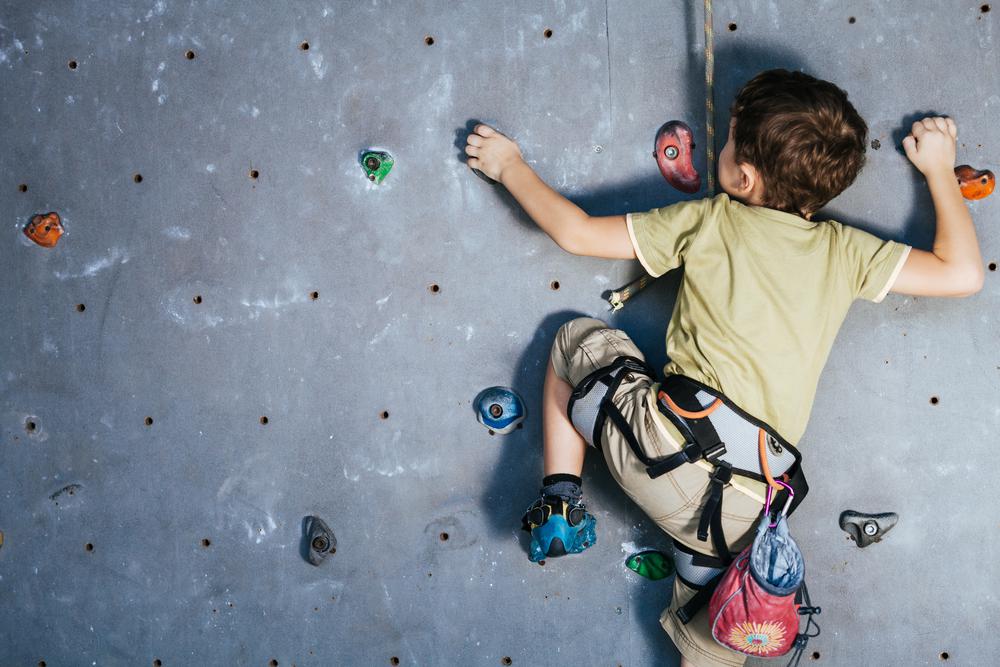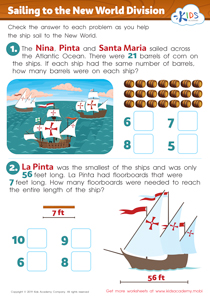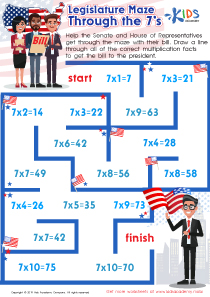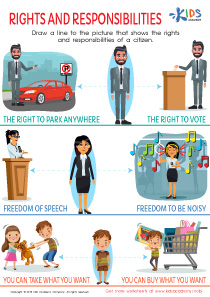Understanding communities Normal Community Worksheets for Ages 6-8
4 filtered results
-
From - To
Empower young learners with Kids Academy's "Understanding Communities Normal Community Worksheets for Ages 6-8". Designed to engage children, these worksheets dive into community roles, responsibilities, and dynamics through age-appropriate activities. Kids explore important concepts like local government, community helpers, and how different individuals contribute to society. With fun, interactive exercises, these worksheets nurture social awareness, critical thinking, and teamwork skills. Ideal for early elementary students, they provide invaluable insights into the fabric of their own community, fostering a deeper appreciation for their surroundings and encouraging active participation. Prepare your child for a better understanding of their world!
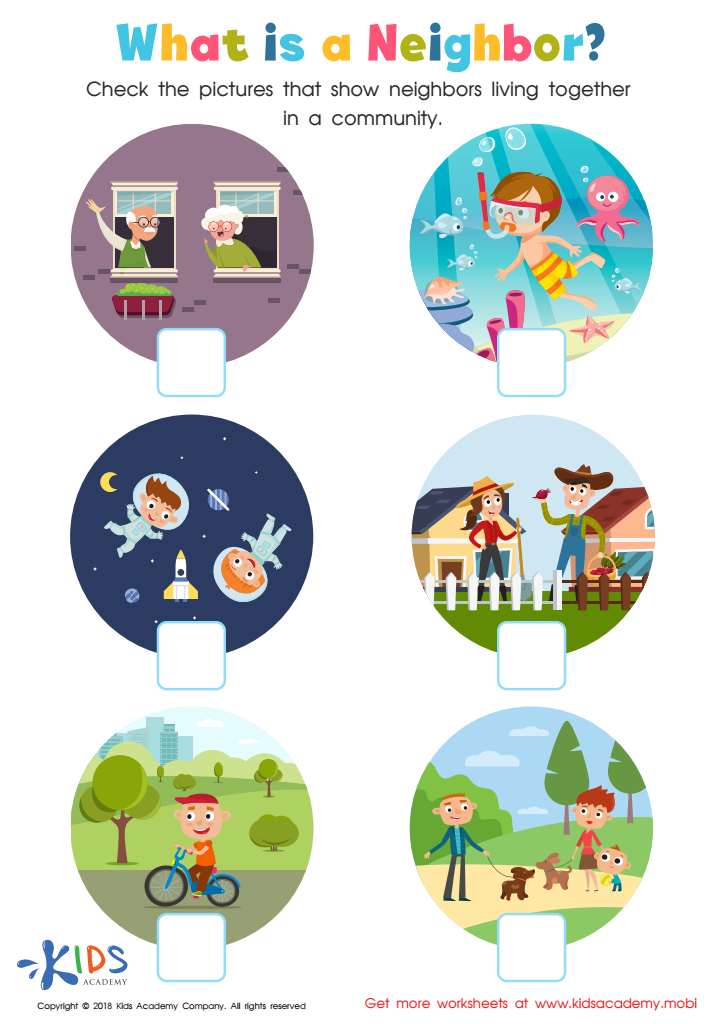

What is a neighbor Worksheet
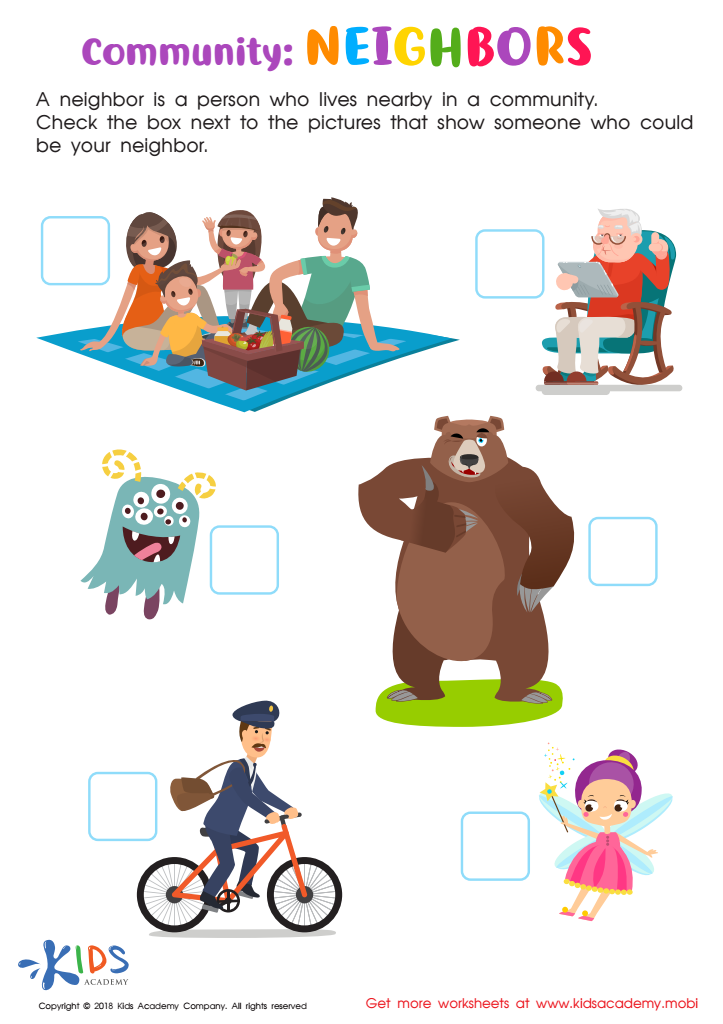

Community: Neighbors Worksheet
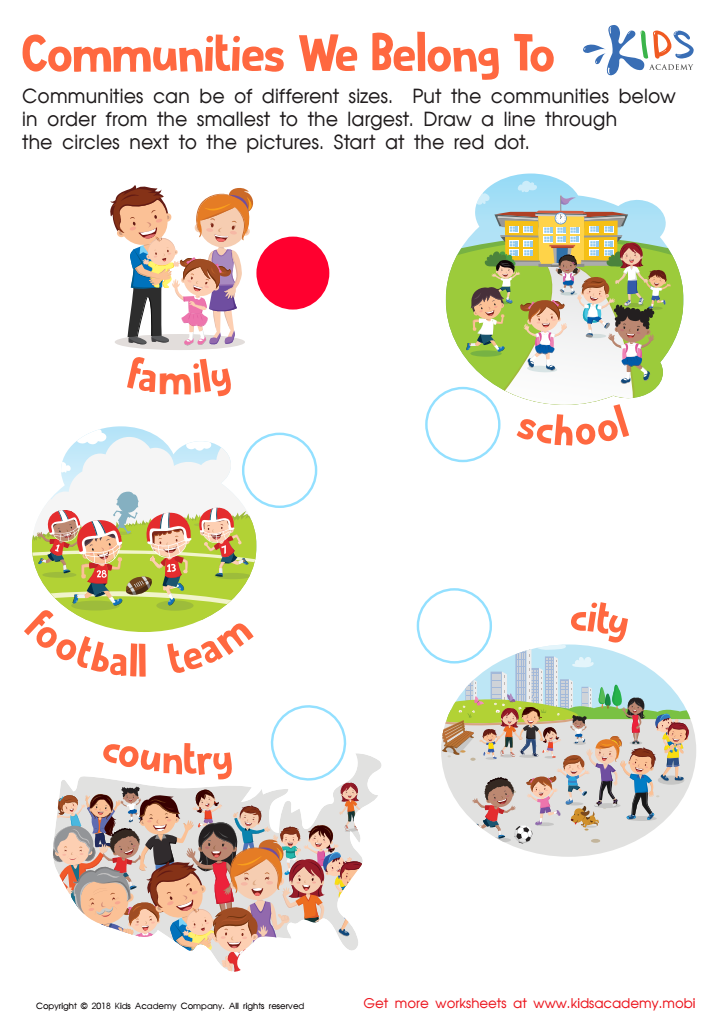

Communities We Belong to Worksheet
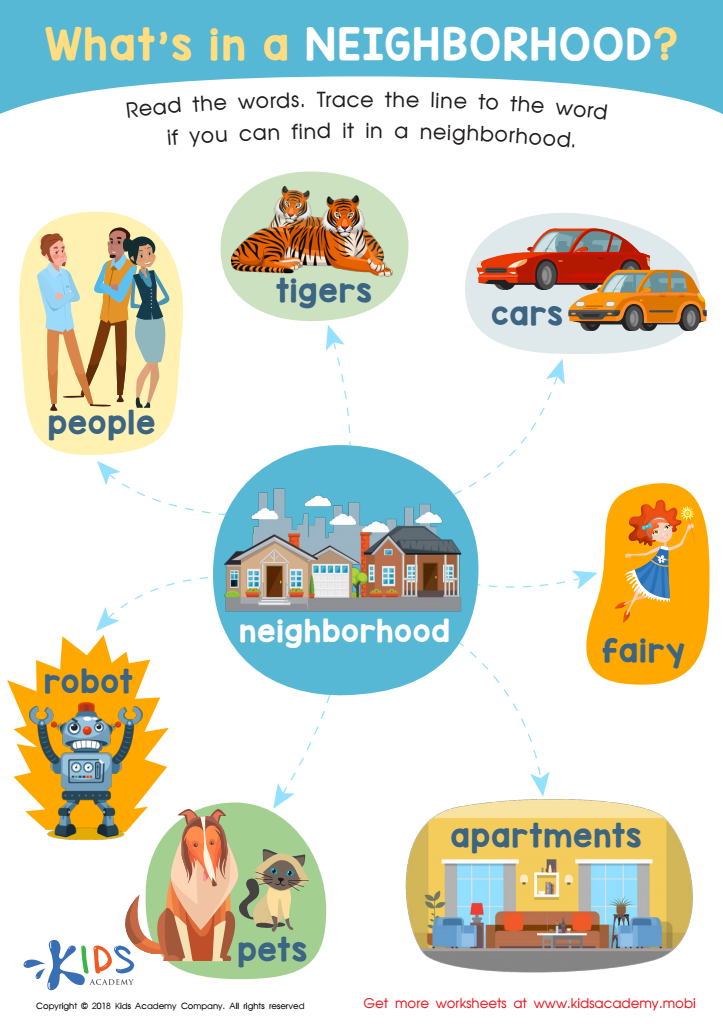

What's in a Neighborhood? Worksheet
Understanding communities, especially for children ages 6-8, is crucial for both parents and teachers for several reasons. Firstly, it helps young children develop a sense of belonging and shared responsibility. At this early age, children are beginning to form their ideas about how societies work and the importance of cooperation and empathy. By learning about their communities, they start to understand the concept of working together for a common good.
Secondly, knowing about their local community enables children to appreciate diversity and experience inclusiveness firsthand. They discover that people come from various backgrounds and have different roles, yet together they make the community function smoothly. This foundational knowledge fosters tolerance, respect, and social harmony from a young age.
Thirdly, awareness of community structures prepares children for real-world challenges and problem-solving. When children recognize the roles of key figures such as firefighters, teachers, and healthcare professionals, they learn whom to turn to in times of need, thereby enhancing their sense of security and self-reliance.
Lastly, being involved and knowledgeable about their community encourages civic engagement and instills values of citizenship early on. By understanding their community’s basic functions, children are in a better position to contribute meaningfully as they grow older. Therefore, parents and teachers should prioritize teaching about normal community dynamics to lay a robust foundation for well-rounded and responsible individuals.
 Assign to My Students
Assign to My Students







